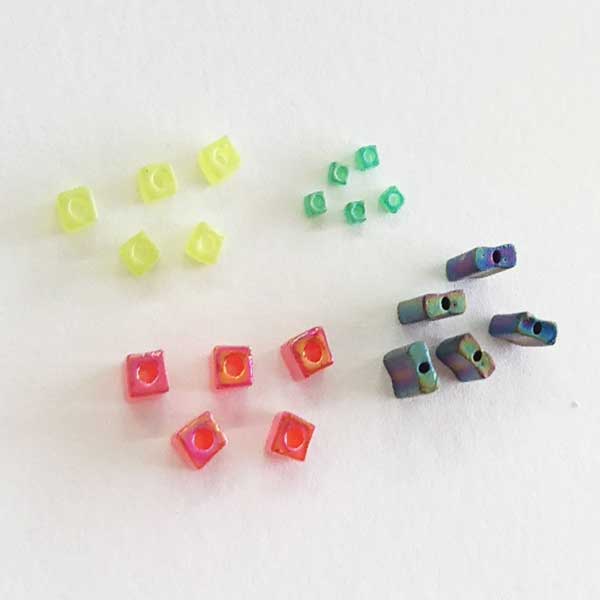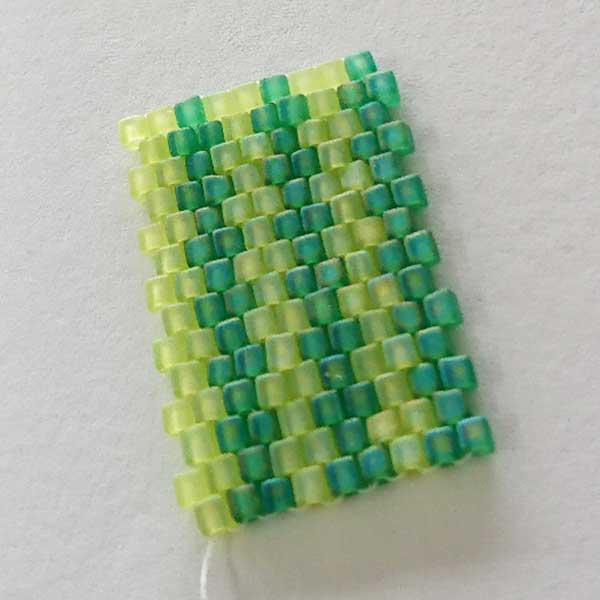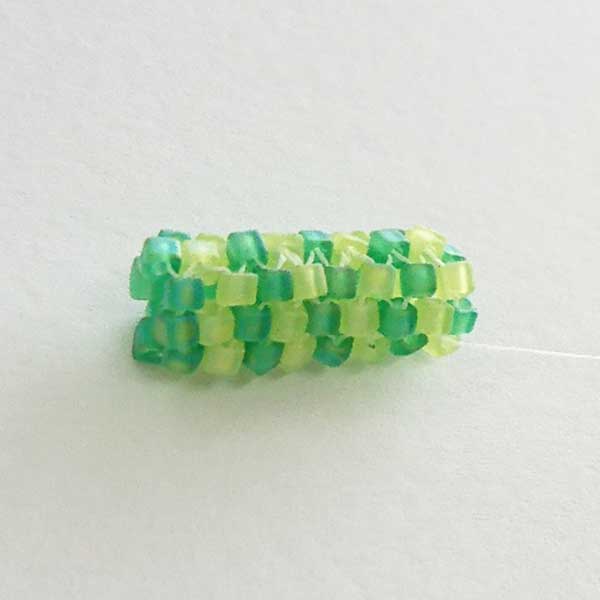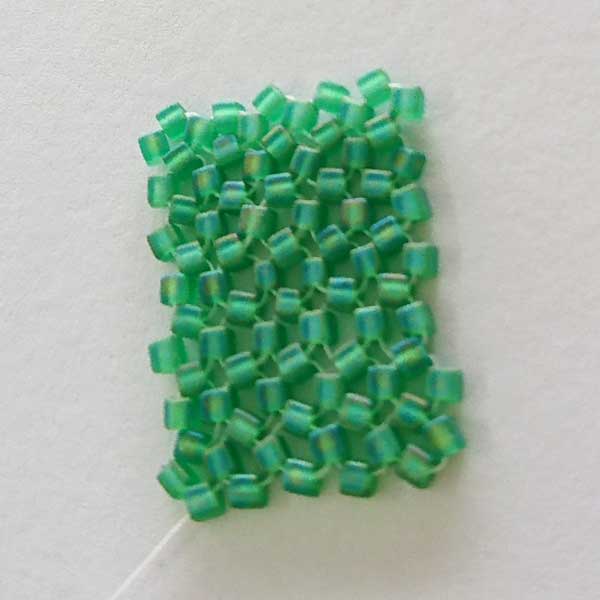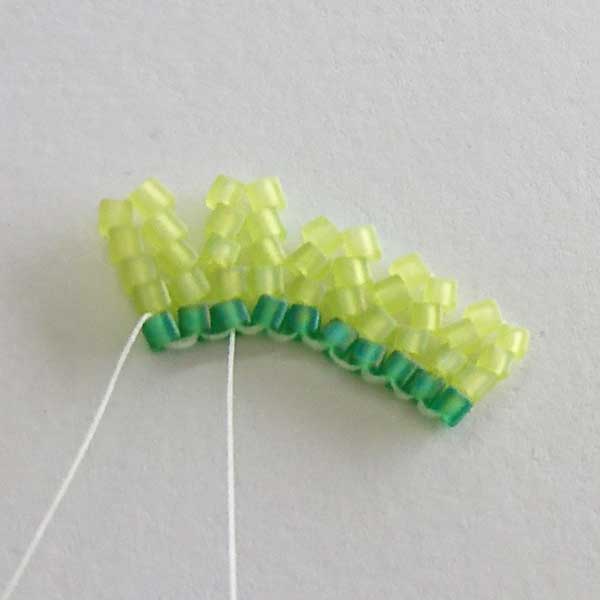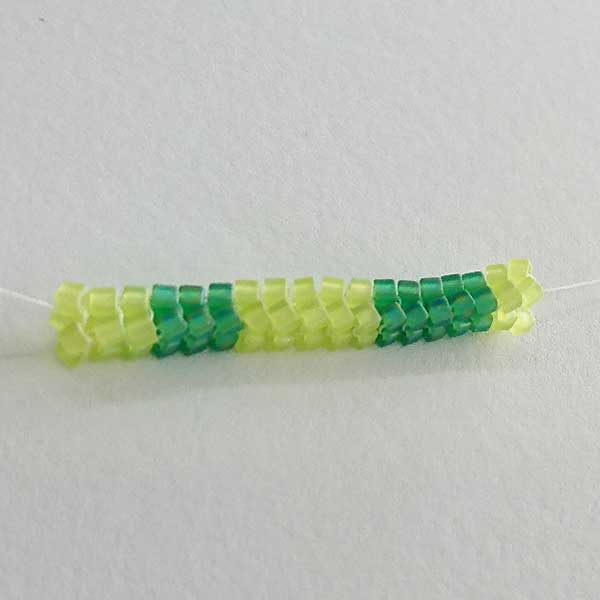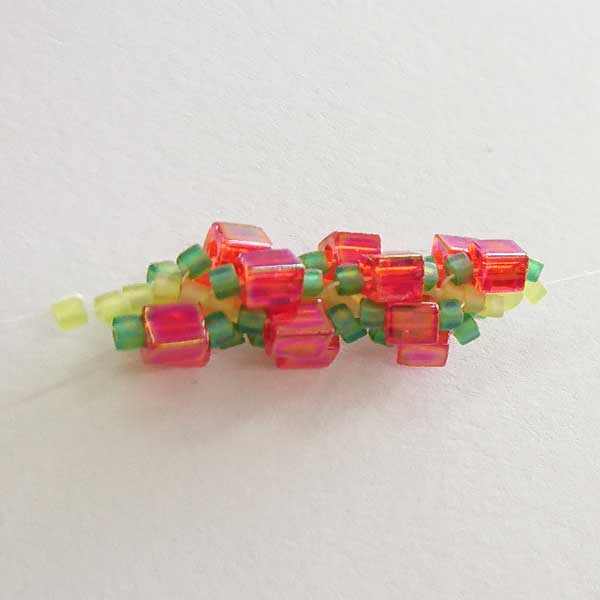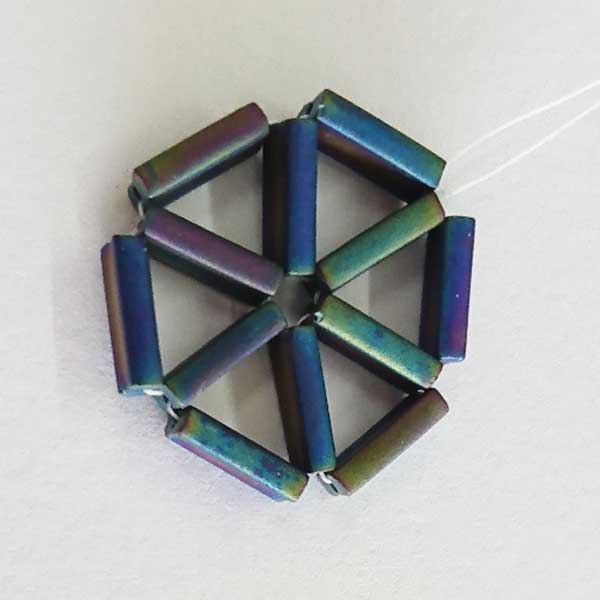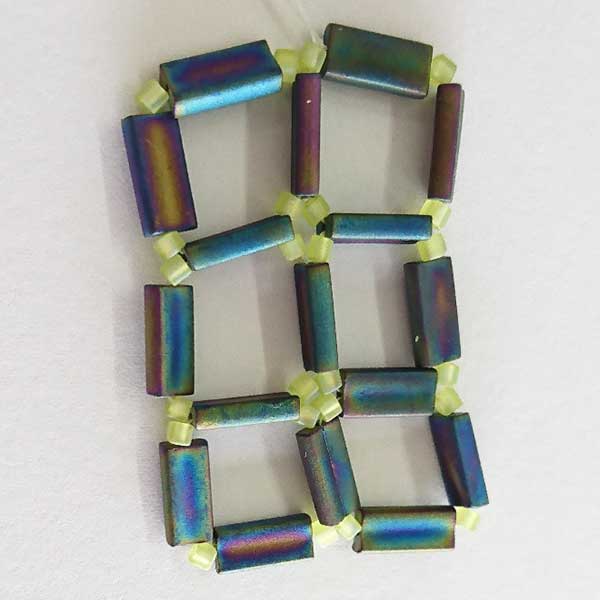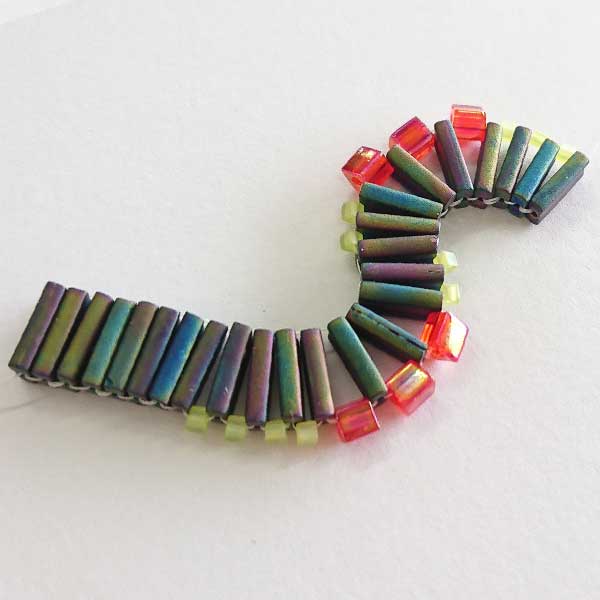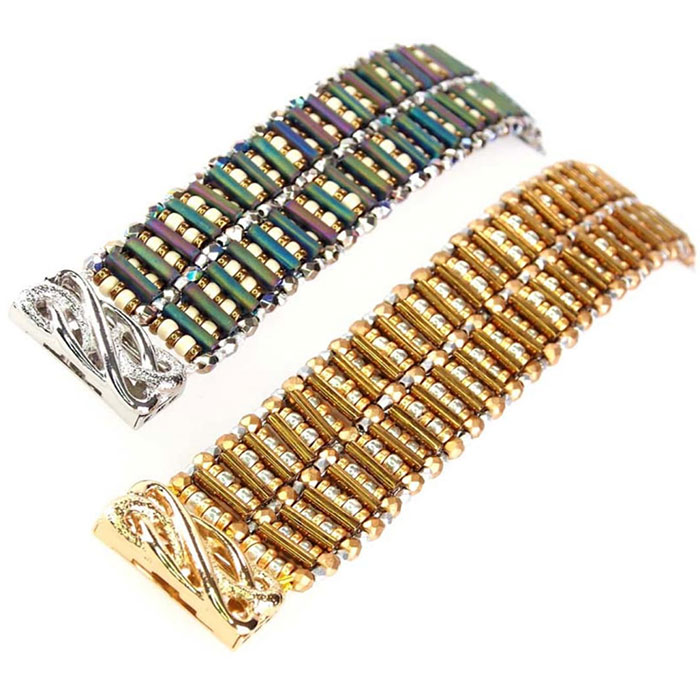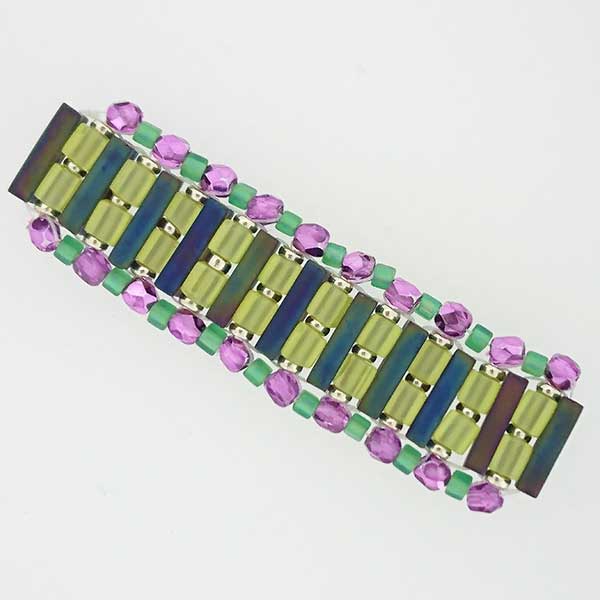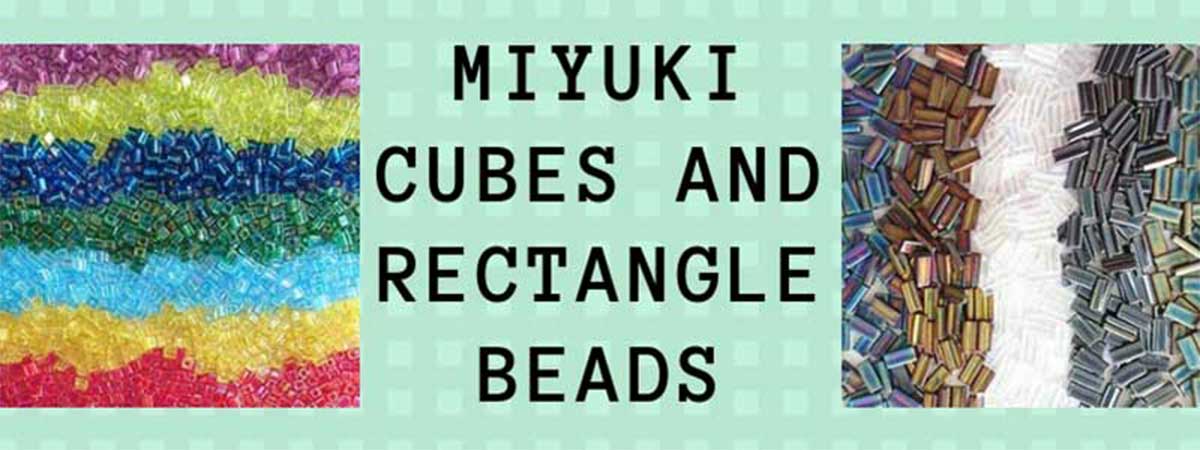
Miyuki Cubes and Rectangles have been around for a while now, and we know some beaders love them (including us)! But we want all beaders to love them as much as we do. So what better way to spread the cube-love than to tell you all about them and how you can use them.
First off, one of the biggest reasons of all is that both the Miyuki Cubes and Rectangles are manufactured in Japan by Miyuki (no surprises there!), and as such are precision-cut, high quality beads. This also means they have a great range of colours and finishes available.
The Cube and Rectangle beads are both single-holed beads, with the cube and rectangular shapes being very true - both beads have crisp, sharp-looking edges giving a very definite geometric shape and due to the hole alignment, they can be stitched together seamlessly producing uniformly professional looking pieces.
Bead Details
Miyuki Cube beads (also known as Square beads) are available in three different sizes:
- 1.8 x 1.8 x 1.8mm, with a hole diameter of approx. 0.8mm
- 3 x 3 x 3mm, with a hole diameter of approx 1.3mm
- 4 x 4 x 4mm, with a hole diameter of approx 1.4mm
Miyuki Rectangle beads are available in one size:
- 4mm wide x 9mm long, with a hole diameter of approx. 0.6mm
| As you can see, both the Cube and Rectangle beads have large holes that allow for multiple thread passes. However, as the beads are glass and angular, if you pull the thread too tight across the hole it may cut through if your thread isn't very strong. |
The 1.8mm Cube beads are available in over 80 colours, whereas the 3mm and 4mm Cube beads are available in over 290 colours! The finishes available for all three sizes are (n.b. some finishes not available in all sizes):
| Want to see for yourself? Click on the links below to check out the colours and finishes: |
The range for the Rectangle beads are smaller, with approx. 24 colours available in finishes such as:
- Metallic
- Matte
- Matte Metallic
- Matte AB
- Opaque
- Rainbow
- Grey Luster
Using the Cube and Rectangle Beads
With the great range of colours and finishes for these beads, they can be used in all sorts of projects. We have stitched up a few samples below using some traditional bead stitches to show how the beads work together.
Cube Beads - 1.8mm x 1.8mm x 1.8mm
In this sample we have used basic Even-Count Peyote. You can see how closely the beads fit together, to produce an almost fabric like look and feel to the beads. The beads are fairly flexible along the length of the sample, however across the width they are much more solid, so they would be great as a base for a bracelet. As the holes are quite large, there is plenty of opportunity to add embellishments around the edges, such as fringes, picot stitches or simple drop beads, however if you want to embellish across the top of the bracelet you may find this difficult due to how snug the beads are (but not impossible with a little patience!). | In this sample we have used Tubular Peyote. Although the beads are angular, they work up nicely as a tube and being cubic, fit together snugly in each round. The tubular rope is fairly flexible so could work as a bracelet or necklace base, however this will depend on your stitching tension. Due to the shape of the beads, as they form the tube the corners stick out slightly. This is perfect if you wish to add embellishments around the rope, as the holes are easily accessible and allow for multiple thread passes. | In this sample we have used Right-Angle Weave (RAW). Again, due to the cubic shape, the beads fit well together and the square rounds of RAW are easily seen. However, unlike seed beads, there is quite a gap between each bead - great if you want to add embellishments or tiny crystals in between, not so great if you are looking for a close fitting stitch. The sample is very flexible in all directions, so this is a great stitch to use if your design or project is versatile. |
In this sample we have used Herringbone. The initial row of Ladder-stitched beads (shown in dark green) came together really well, as the beads sat neatly together. As the Herringbone stitches were added, due to the shape of the beads, they caused the piece to start to curve out slightly. The Herringbones themselves sat neatly and easily on top of each other, however if you're after a straight piece of beadwork, then these beads might not be best to use, as they fight for space on top of the Ladder stitches. | In this sample we have used Tubular Herringbone. Unlike the flat Herringbone stitch, these beads seems to have been made for this! They sit together closely and ensure the rope is neat, uniform and very flexible. The holes are easily accessible if you want to add further embellishments and if you wish, you can even twist the rope in your fingers before attaching it at either end, giving another dimension to this design. | In this sample we have used Spiral Rope. A very popular and versatile stitch amongst beaders, and these beads do it justice too. The inner string of cube beads sit closely and can be flexed between your fingers to allow for the needle to pass through the right beads before adding the spiral outside embellishment. As with any Spiral stitch, the beads curve nicely around the core and align themselves into a neat spiral. Again, the holes are easily accessible if you want to add further embellishments or stitch the spirals together. |
Rectangle Beads
As you can imagine, these beads aren't used in the same way as the Cube beads. Due to the shape of them, they work best as a foundation for components, as a base to add further beads too, or as a base for a strip.
For these samples, we have stitched together a couple of ideas to give you some inspiration.
In this sample we stitched the beads together using a Triangle-Weave. This is just one example of how these beads can create shapes that can be used as components, and they can be easily worked into squares, rectangles, pentagons, hexagons etc. Stitching the beads in this way helps they to stay oriented in the same way, and the large holes again allow for further embellishments. Please note, as the holes run through the centre of the bead, and the sides of the rectangle show, this can create quite a 'high' component, so factor this in to any designs you make. | In this sample we used Right-Angle Weave (RAW) with 1.8mm cubes at each corner. Here, the beads work well to create a square base for a design. The addition of the cubes at each corner add flexibility as well as allowing the holes to be more accessible if you want to continue adding more beads to the base. However, you can also create this base without the cubes if you wish, but it won't be as flexible. Due to where the holes are, these beads may be prone to twist around (seen here as some show the face of bead and others show the side). You can mitigate this happening by adding further beads to help keep the beads facing the correct way. | In this sample we used Ladder Stitch. Here you can see how easily the beads fit tight together with Ladder stitch, which can make a great base. The flexibility along the length of the strip is good, however it is minimal across the width of the strip. We have also added in smaller then larger cubes in between each stitch to create undulating waves, so it is easy to add another dimension to this sort of design. You could also create circles in this way. |
So lots of ideas, and hopefully you can see how versatile both these beads can be. Why not try substituting some of the beads in your favourite patterns or stitches with a Cube or Rectangle bead? We did, with our free Bamboo Cuff pattern from Helena Tang-Lim:
|
|
|
Here is the original Bamboo Cuff, using Rectangle beads with seed beads and spacers. Love the pattern and want to try it yourself? Click here to check it out. | Here we substituted the seed beads with 1.8mm Cube beads and they worked really well. The strip was just as flexible and the beads gave it more of a cubic/geometric look and feel. | In this example, we used the same stitch for the Bamboo Cuff, but after 4 stitches we joined them together to make a beaded bead, then added it to a headpin to make an earring.Just a simple change and a whole new doorway into ideas has opened! |
We hope you're getting giddy over the geometric shapes now, so come and join us in our beady cubic creations! We'd love to see where they take you.
Ready to give them a try yourself? Click below to see the range and buy today:

